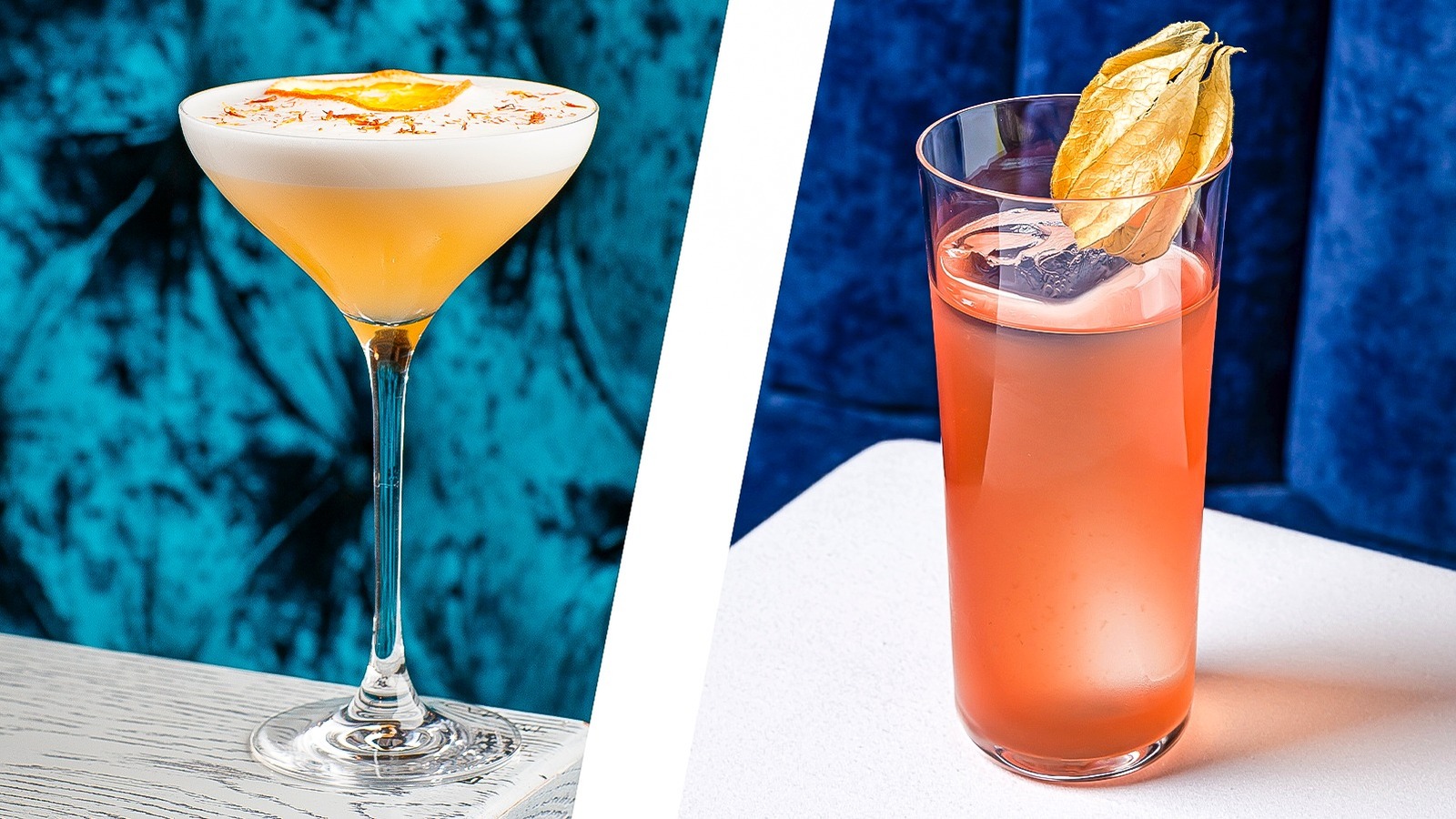It would be an understatement to say there are a baffling amount of cocktail recipes in the world, even if you only focus on some better-known names like sour and Collins. They can be as timeless as a Manhattan or as trendy as an espresso martini. But what makes them really confusing is that one ingredient can change everything. Swap out gin for club soda and your Americano becomes a negroni. The first margaritas were just a daisy made with tequila instead of other liquors. And so go a lot of the differences between the perennially confused sours and Collins cocktails.
The two names are heavily associated with two popular, classic cocktails — a whiskey sour and Tom Collins — but both are actually entire categories of cocktails that simply share some common ingredients. There are pisco sours, Jose Collins, and about a dozen other variations on both names. The sour is the real crossover between the two, as both use citrus — usually lemon juice — to create refreshing cocktails. Both also make use of just about any kind of liquor, not just whiskey for sours and the gin of a Tom Collins. And while there are some ingredients used more in one style, like egg whites in sours, the one key difference that separates the two is usually bubbles.
What is a sour?
Sours are one of the oldest forms of cocktail. They evolved from what’s often considered the first cocktail — British Navy grog. Sailors would be given rations of rum on their journeys, and they added lime to the rum to help stave off scurvy and aid in nutrition. This is the forerunner of the daiquiri and also the early versions of “punch.” Sugar was also added both for flavor and to preserve the mixture along with the citrus. The navy carried these back to England and around the world, and that simple base of citrus plus sugar plus spirit was the earliest way cocktails were made. The name “sour” started appearing in the mid-19th century, with the first written recipe appearing in 1862, and the first mention of a whiskey sour happening in 1870. By the late 19th century, it was perhaps the defining cocktail of the era in the United States.
That combo of spirit, citrus, and sweetener is all it takes to make a sour at the simplest level. Sours are also usually served on the rocks, which is the traditional way of making them and helps dilute the flavor to make them more drinkable, but they may also be served straight up after being shaken with ice. The one other common component in a sour cocktail is egg white, which is used for emulsion and to add a richer texture. However, egg whites are optional and not an essential part of a sour.
What is a collins?
The Collins originated around the same time the sour was taking over the cocktail world. The first mention of it was not called Tom Collins, but “John Collins.” which is cited in an 1865 article and given a recipe in an 1869 cocktail book. One theory that still gets credence sometimes is that the Tom Collins originated with an 1874 hoax where people would trick their friends into looking for a fictional man named Tom Collins in kind of a 19th-century prank and that the drink was given that name after the hoax. However, the John Collins predates that, has an identical recipe to a Tom Collins, and got its name from a waiter at an English bar called Limmer’s. The name Tom Collins came as an American evolution, not for the joke, but for the use of Old Tom Gin, a style that was popular in New York as it was more similar to Dutch gin than English.
Those original John Collins recipes, and the Tom Collins after them, are different from a sour because of the addition of soda water, and that has pretty much stayed true to this day. Liquor, with citrus, sugar, and soda water makes it a Collins. It should also always be served over ice, and in a tall Collins glass instead of the shorter sour glass. It may not seem that different, but the fizzy water addition makes a Collins a more refreshing and easy-drinking alternative to the sour.






